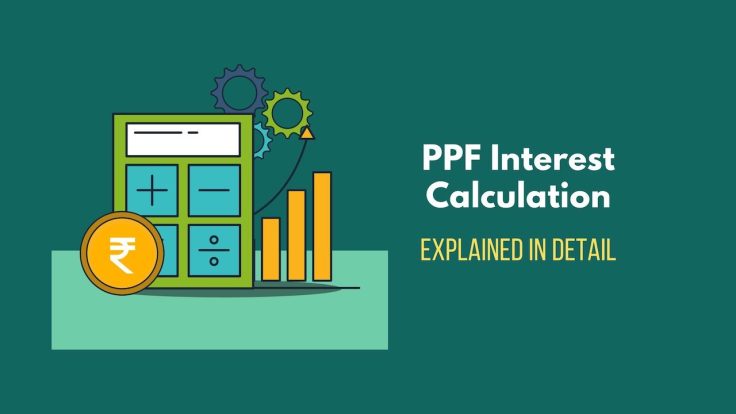Before we go into how PPF Interest is calculated, let us first understand what it is.
What is PPF?
PPF stands for Public Provident Fund. It was introduced in an effort to mobilize small savings into an investment that has reasonable returns with added benefits in order to save tax. This scheme was introduced by the National Savings Institute of the Ministry of Finance, Government of India. And it is still managed by the Ministry of Finance to this day, and they decide the interest rates for it.
Basically, the PPF scheme helps one build a retirement corpus. The PPF is backed up by the Government of India, therefore the risk involved is minimal and a risk-free return is guaranteed. It was introduced in the year 1968 and, right now the current interest rate is 7.1% compounded annually.
Additionally, it comes under the EEE status which means that the amount invested and the interest earned are all tax-free.
So, now that we have understood what it is. We might want to understand why it is an interesting subject as an investment to partake in.
Why Invest In PPF?
As we have already mentioned how risk-free it is, it is a good investment for long term. Furthermore, it is tax-efficient as it falls under the EEE status of 80C. The amount invested, the interest added and the maturity amount are all tax-free. So, you can make easy deposits of 12 installments within a year. PPF offers fluidity in deposits. In contrast, an investor looking for high returns that can absorb risk should explore other options.
For investors who are looking to invest in a secure and safe investment, the PPF scheme is a very good option. Moreover, as it is benefitted by the government, it is also tax-free. If you are an investor who wants a secure retirement, to create a long-term investment plan, end to end tax benefit, risk-free option, and is not comfortable with market fluctuation should opt for PPF.
A PPF account can be easily opened online and offline at private banks, post offices, and nationalized banks. As a bonus benefit, the balance in a PPF account cannot be attached to the investor’s liability in case of insolvency. Hence, this investment can serve as a last recourse for the investor to ensure future security.
However, an investor who is young and new to the scene has many better options like ELSS, NPS in comparison with PPF.
PPF Interest Over The Years
The interest on Public Provident Fund has compounded annually, the interest is calculated every month and credited at the end of the year. Moreover, the PPF interest rate is fixed every quarter by the Ministry of Finance, this has continued since 1st April 2016.
From April 2018 to June 2021, the interest rates have zig-zagged from 7.9% to 8.0% in 2019 and back to 7.1% in June 2021.
In order to maximize your returns, you should invest before the 5th of every month. This is because PPF interest is calculated according to the lowest balance between the 5th and the last day of every month. For example, if you deposit Rs. 20,000 on 2nd Jan and, another Rs. 20,000 on the 15th Jan, the interest will only be calculated on Rs. 20,000 and not Rs. 40,000.
After 20 years, the PPF returns will be the compounded value as per the interest rate declared in the 20 year period. So, if the average rate is 8% then Rs. 1.5 lakh that is invested over 20 years can grow to as much as Rs. 40 lakhs.
How PPF Interest Is Calculated?
As we have mentioned, the PPF interest and other small savings are determined on a quarterly basis. Furthermore, the interest on your PPF account is calculated on a monthly basis but credited t you on the 31st March of every year. The PPF accounts have a maturity period of 15 years.
How is PPF calculated on a monthly basis?
- The interest is calculated on the minimum balance in the PPF account between the fifth and the end of the month.
- You will get interested for that particular month on any fresh deposit made before the fifth of every month.
- In order to maximize the interest, it is recommended that you deposit all your contributions before the fifth of each month.
- Ideally, if you have the fund, you should deposit Rs. 1.5 lakh in lump before the fifth of the month. This will help you earn interest for the entire year because of that one-time deposit.
Additionally, PPF accounts can be extended for a block of five years each. The government allows premature closing of your PPF account after five years but only under special situations.
There are partial withdrawals, which involve withdrawing funds once every year from the seventh financial year. And this withdrawal is also tax-free.
Conclusion
The PPF scheme is a very safe and secure option for investors as it is backed by the Government of India which makes it a more secure investment option in comparison to savings accounts like FD, ELSS, etc. Furthermore, the tax benefits are a major benefit why it is such a favorable option, as the interest earned and the maturity amount is exempt from tax.
Lastly, it entirely depends on what your motivation and aim are behind your investment. If you want to build a secure future for yourself post-retirement by investing in your small savings this is a very good option.
Recommended Read: 10 Best savings schemes for conservative investors







